Nothing says summer quite like sunflower and their warm colors! These flowers are great for bringing a real touch of […]
Orchid
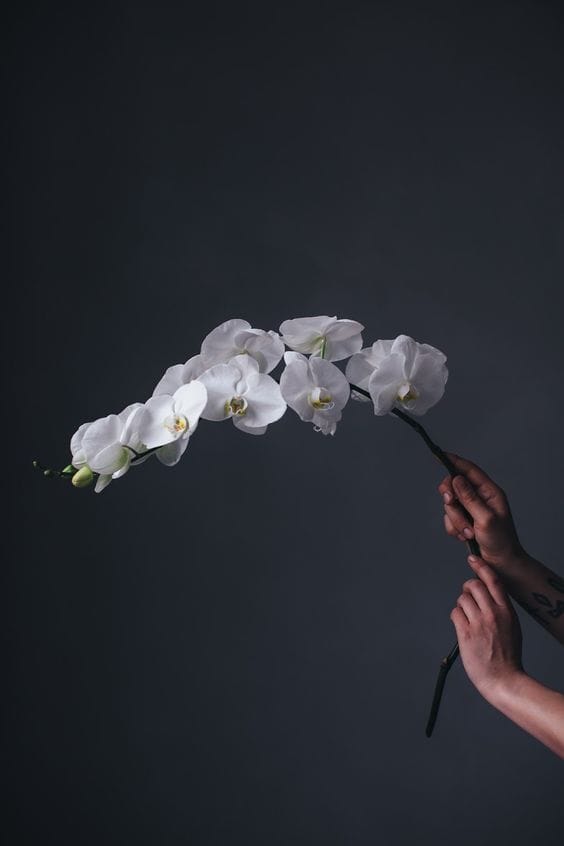
Without a doubt, it is one of the most magical, exotic, and tender flowers that have inspired and continue to inspire both gardeners and florists, as well as ordinary people with countless legends and stories about this magical plant.
Origin
Legends of orchids
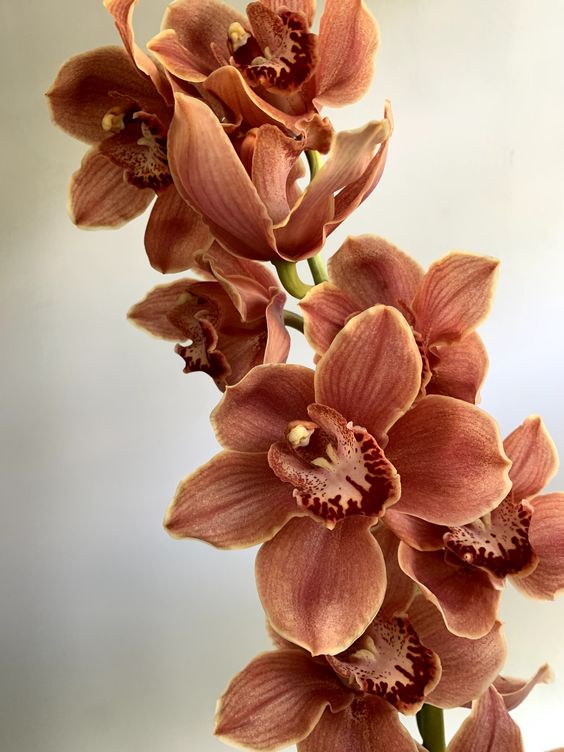
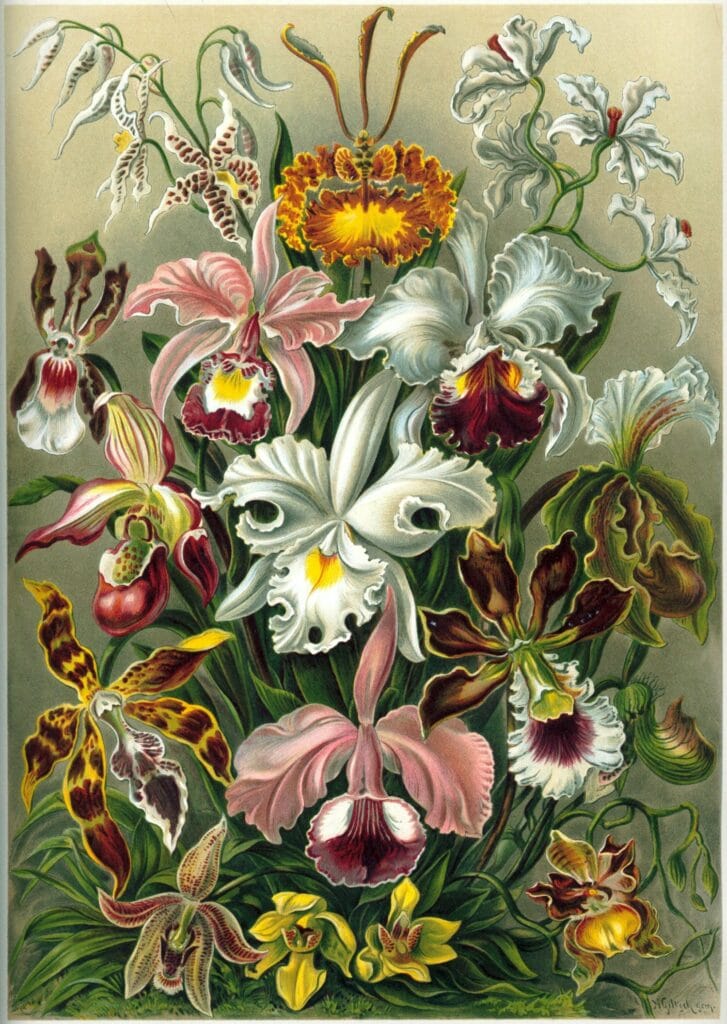
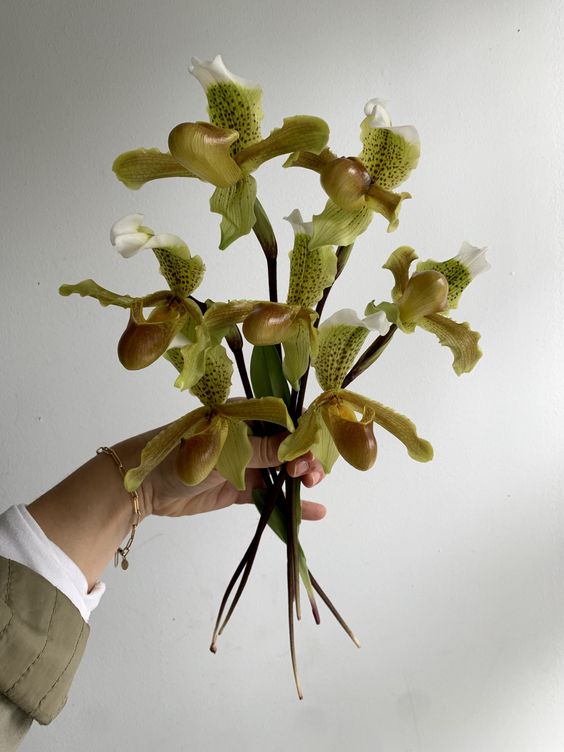
In nature, orchids grow mainly in the tropical regions of Central and South America, the countries of Southeast Asia, as well as in East Africa. At the end of the 15th century, Spanish sailors began to bring the flower to Europe, and it amazed the Europeans with its elegance and nobility. The search for new exotic species marked its boom nearly three centuries ago. The cultivation of the orchid in Europe did not occur until the 19th century when scientist William Sulainson discovered a new plant in Pernambuco, Brazil, and sent specimens to botanist William Cutlery at Glasgow Botanic Gardens for identification. He devoted himself to their cultivation in England, therefore the first orchid imported from Brazil was named after him - Cattleya Labiata. These plants became extremely sought after, and in those times only wealthy aristocrats could afford to decorate their tuxedo lapels with the delicate exotic color.
Today orchids have become an ideal option for an exclusive and memorable gift. The plant is often a wonderful decoration in a residential interior or in an office space.
Description of the orchid
Orchids have an unusual beauty, but at the same time, they have no pollen to attract pollinating insects. Each orchid flower produces up to 10,000 small seeds, which, however, can survive only if they fall into certain favorable conditions - such are, for example, some mushrooms. Some orchids bloom for the first time in their 18th year, and others delight the eye for almost a century, as long as they grow in a warm and very humid place, without the direct influence of the sun's rays.
At home, orchid flowers are incredibly beautiful, but they demand their attention and care. Like everything gentle and delicate, orchids are a little bit capricious, comparing them with the character of pretentious ladies. Orchids are an indispensable part of a beautiful and luxurious life, always looking fresh and tender.
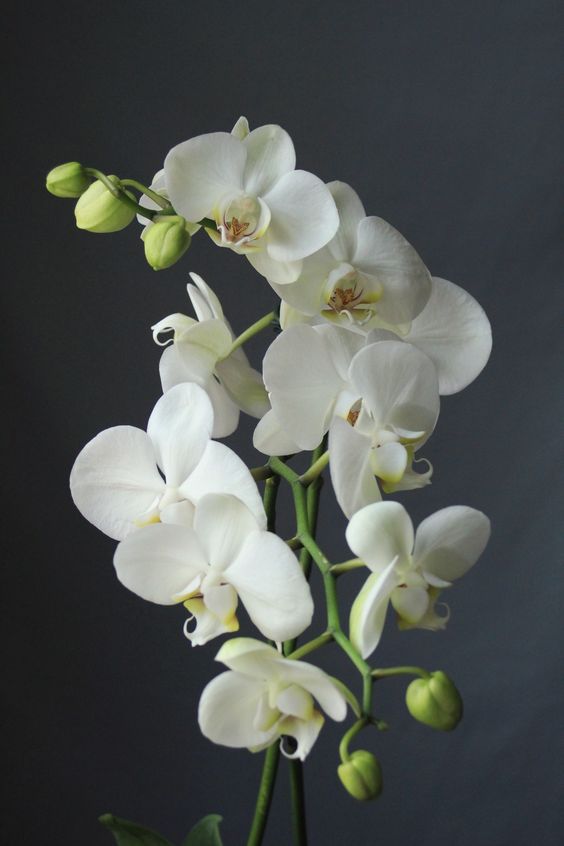
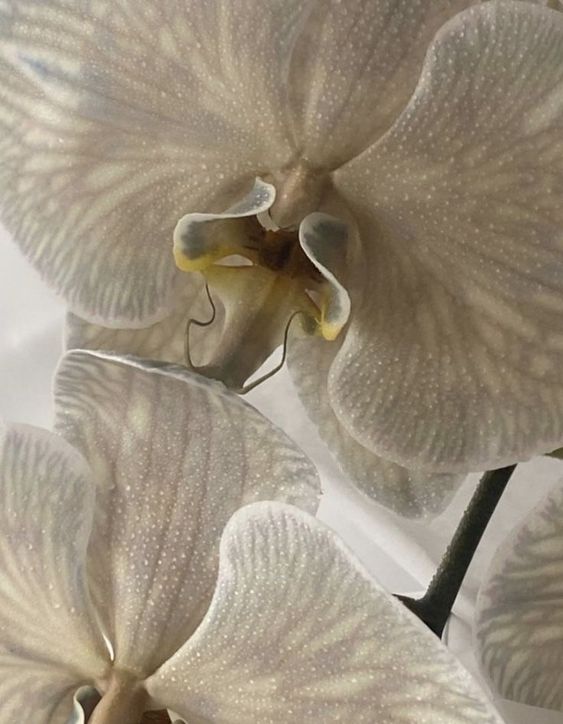
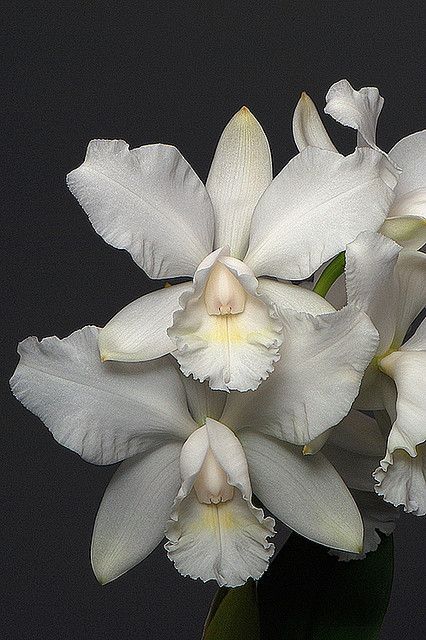
Legends
The beauty of these unusual plants is associated with many legends and myths that come from all over the world. Some of the myths associated with the orchid come from South America, where the Amazonian Indians created a legend about the good goddess Orchid. The goddess was beautiful and gentle and saw only the infinite beauty of the world. One day she went to the people to teach them kindness and mutual understanding but was driven away by them into the forest. In the place where she spent the night she left a gentle veil, which the wind carried away, and on the ground and on the trees grew delicate, fragrant flowers, similar to fluttering veils, with beautiful cups and flowers.
According to another legend, an orchid is a young man infatuated with one of the maidens accompanying the god Dionysius. The boy wanted the girl so badly that he did not bother to touch her. The girl managed to break free and run away, and the god Dionysius, when he found out, called the beasts and sent them to destroy the boy, but something in him woke up, like a nascent male solidarity, and took pity on him. He turned it into a beautiful flower, whose name we know - Orchid.
There is another legend that tells about the beautiful Venus who enjoying love games, dropped her shoe. The shoe became a delightful flower, a symbol of her sexuality. To this day, the orchid is attributed magical properties, and love elixirs were prepared from its leaves and seeds.
Orchid Types
Thanks to evolution today, there are about 30,000 wild species of this exotic flower in nature. And if you add the artificially created hybrids, you will reach the impressive number of 100 thousand orchids in the world! Specially bred and most popular varieties of orchids, which are available as cut flowers and are most common in various combinations of bouquets and arrangements are:
Phalaenopsis orchid Native to Southeast Asia, the Philippines, and northeastern Australia, Phalaenopsis is the most common genus of orchids. This variety has the great advantage that it has a wide range of colors and a palette of shades. The extensive genus numbers about 40 species. The representatives of the genus have a monopodial stem (with a clearly distinguishable main stem), strongly thickened broad leathery leaves. The orchid grows upwards. From the "bosom" between the leaves of the orchid come the aerial roots and the stem of the flower. Many members of the genus and hybrids are known in indoor and greenhouse flower production and are also widely found in botanical gardens. The first representative of this genus of orchids was found on the island of Ambon (Moluccas) by the German traveler Georgi Rumfon in the 17th century.
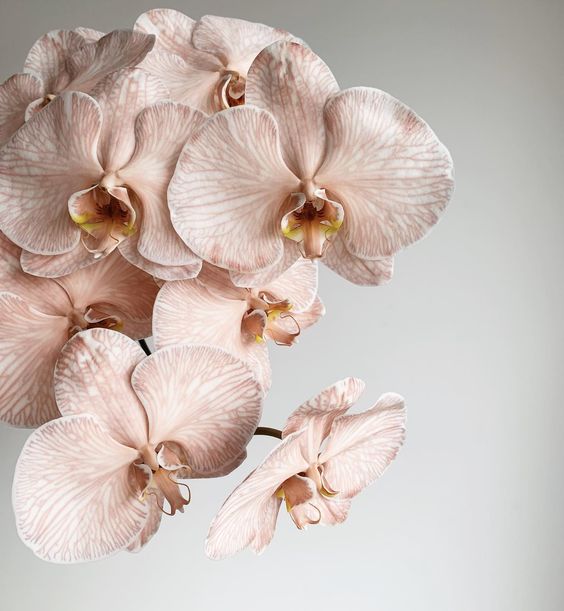
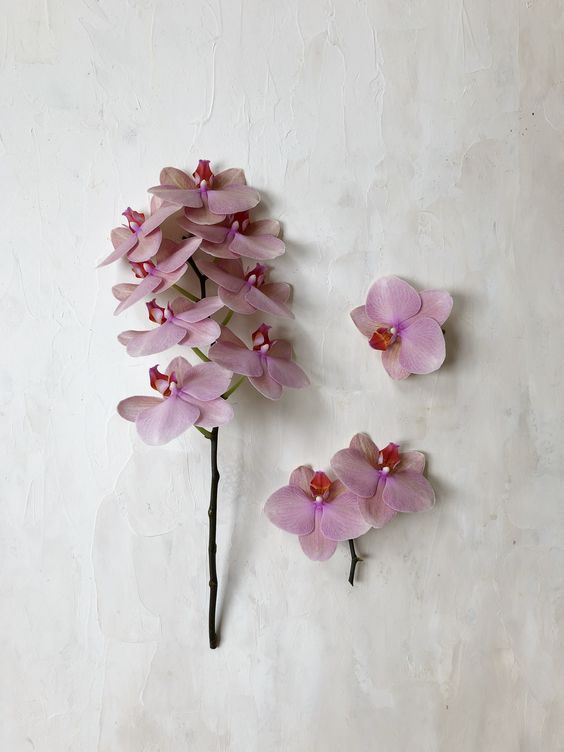
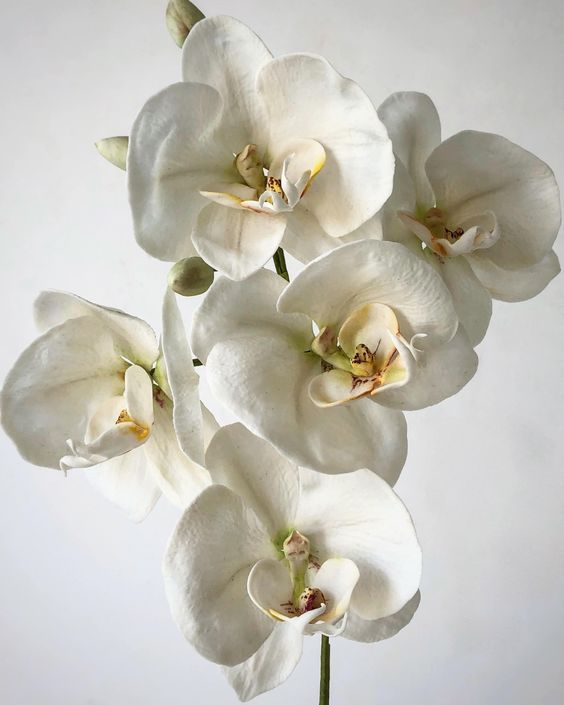
Orchid "Wanda" The Wands originate from tropical Asia. The name comes from a Sanskrit word for an orchid. There are over 50 natural species, but their hybrids make them numerous. They bloom in various color combinations, including pale blue. The leaves of this orchid are long, with a smooth periphery, and have parallel ribs (veining). However, they are specific to each representative depending on its habitat. In some species, they are flat and thin, while in others they are slightly cylindrical and fleshy (succulent). The colors most often enchant with exotic variations of orange, red, and purple shades. The peduncles can appear anywhere on the stem, but not centrally from the axils of the leaves as in most plants. These beautiful orchids are one of the most commonly grown, popular, and collected genera, as they have a wide decorative value. In recent years, striking work has been carried out on hybrid forms of "Wanda", which significantly affects the variety of colors of this variety of orchids.
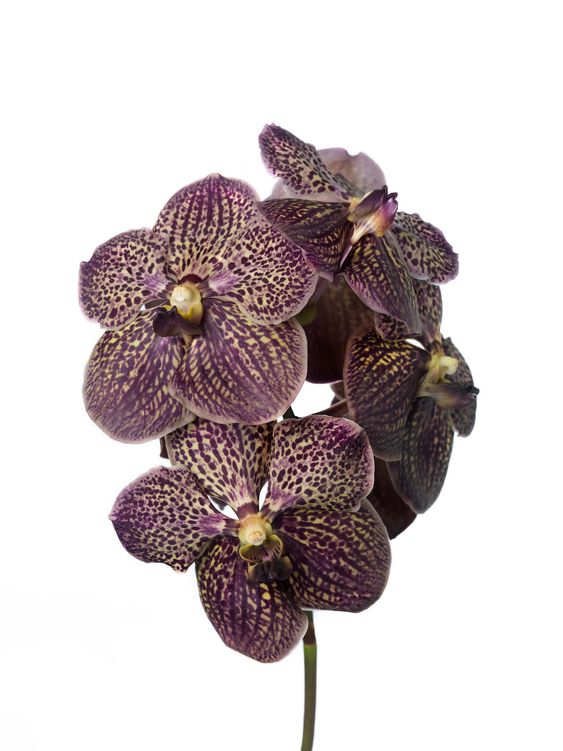
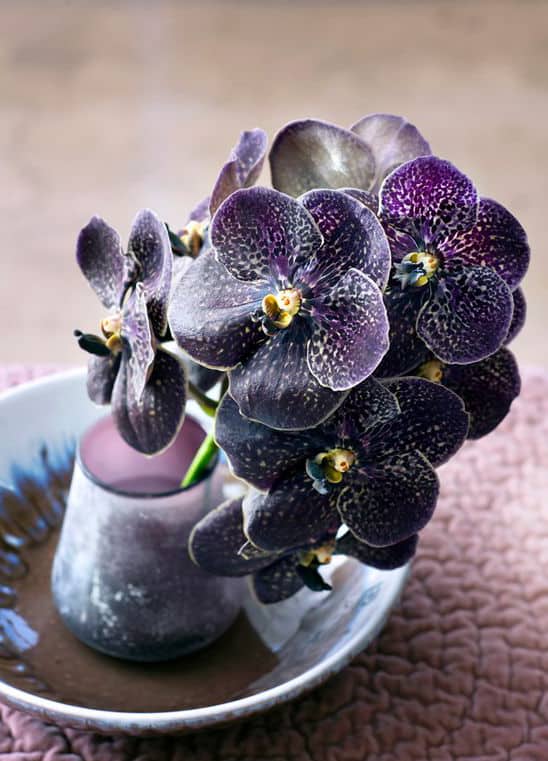
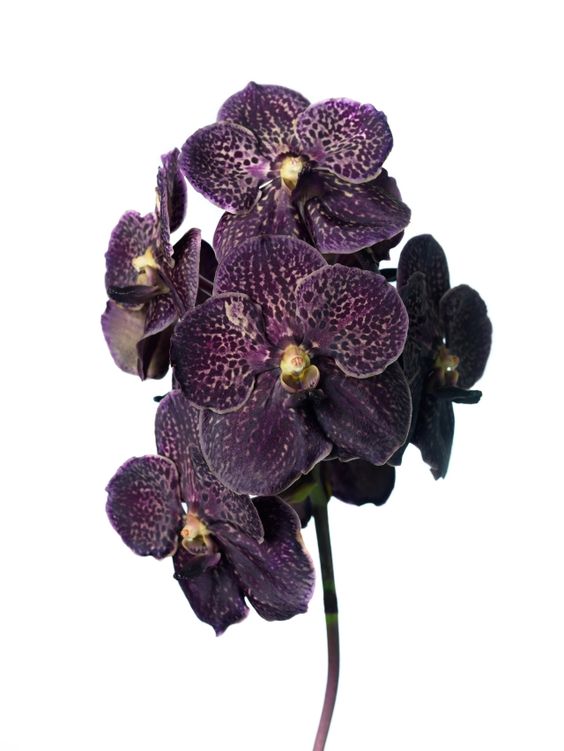
Cymbidium orchid There are over 50 species of Cymbidium in nature. The flower is also called an iris orchid, as the flowers are slightly reminiscent of those of irises. The plant itself is characterized by long leaves, fairly tall stems, and inflorescences gathered in clusters. There is a wide variety of colors, and this variety of orchids is found in green, brown, pink, yellow, cream, and red. They are widely used in the composition of bouquets and flower arrangements because the flowers of Cymbidium are extremely stable and durable.
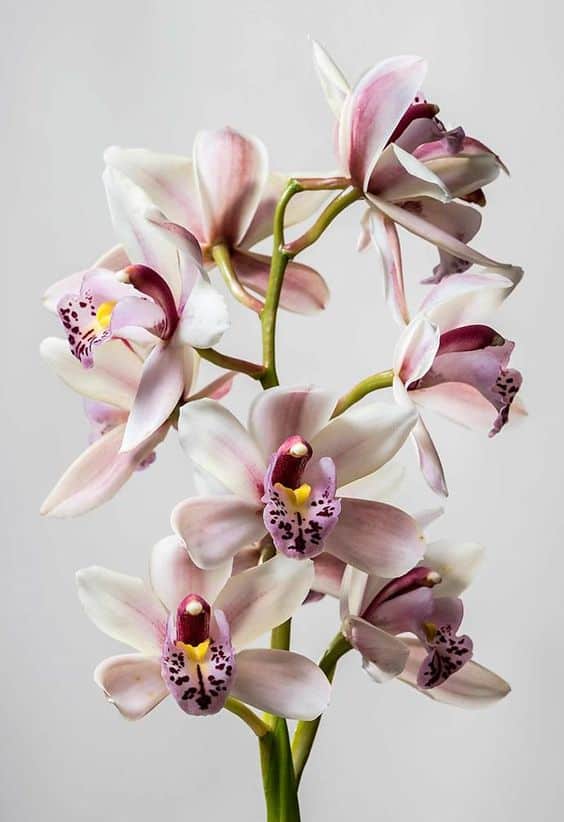
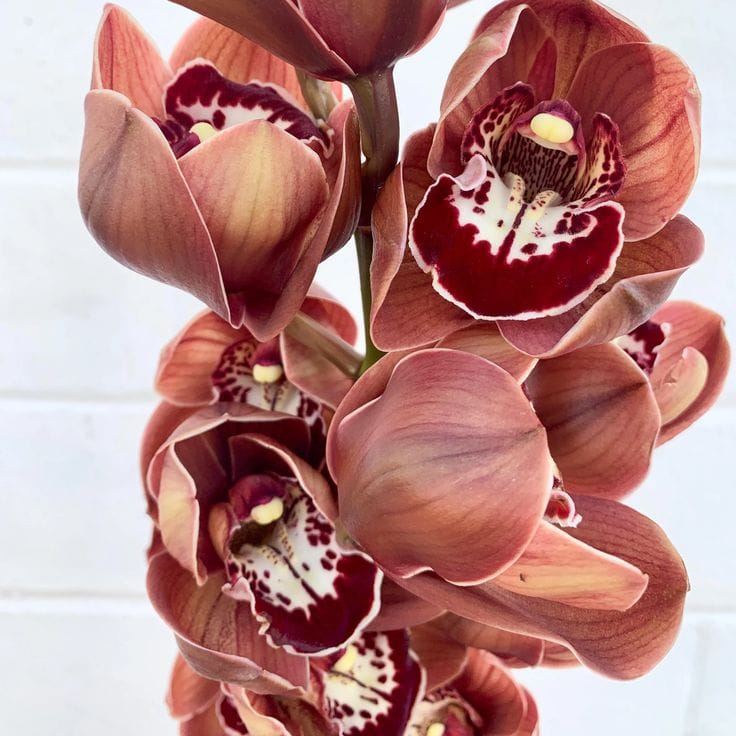
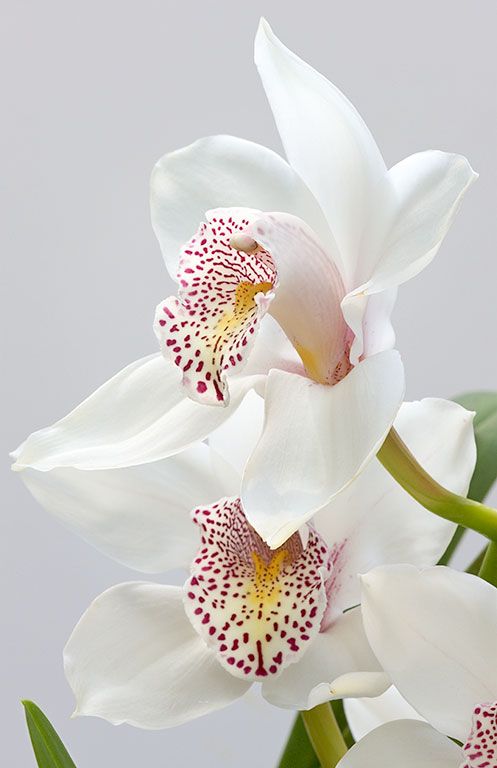
Symbolism
Beauty, perfection, magnificence and luxury, refinement, tenderness, love, intimacy... All these qualities in one flower - an orchid! In the language of flowers, orchids show a high degree of sophistication. Beautiful and fragrant flowers are a gift that we give to loved ones when we want to express our admiration. Their exotic appearance, delicate beauty, and rich variety of colors and shapes make them one of the most preferred flowers for gifting. If you want to leave a lasting impression on a holiday, then the orchid is the perfect choice for this. But before choosing this amazing plant, you need to understand the purpose and symbolism of the flower. Like any other flowering plant, orchids also symbolize different feelings and situations, and their colors can help to choose different occasions.
According to Feng Shui, orchids with dark red flowers feed creative inspiration. They prompt a person to act and create creative work. In addition, in the language of flowers, such flowering plants mean love and union. In some countries, these orchids are usually given as gifts to extremely near and dear ones when we want to show love and attraction. Like many other plants, white orchids symbolize purity, and innocence, they symbolize perfection and elegance. Orange, green, violet, or lilac orchids express gratitude. A bouquet of such flowers can be presented both to a business partner or colleagues and to a close friend.
With its elegance and hidden symbolism, the orchid is a real hit as a potted plant or cut flower in bouquets and arrangements.
-
 Kipra | Arrangement
Kipra | Arrangement93.00 лв.83.70 лв. -
Product on sale
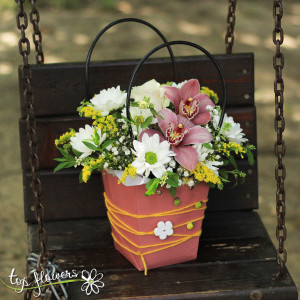 Bouquet in a bag | Pink65.00 лв.
Bouquet in a bag | Pink65.00 лв. -
Product on sale
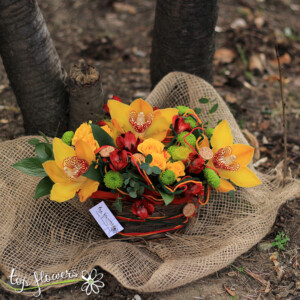 I am waiting for you | Arrangement79.00 лв.
I am waiting for you | Arrangement79.00 лв. -
Product on sale
 Voyage | Arrangement78.00 лв.
Voyage | Arrangement78.00 лв. -
 Lemony
Lemony104.00 лв.93.60 лв. -
Product on sale
 Pink world325.00 лв.
Pink world325.00 лв. -
 Delight
Delight174.00 лв.156.60 лв. -
Product on sale
 I desire you148.00 лв.
I desire you148.00 лв. -
Product on sale
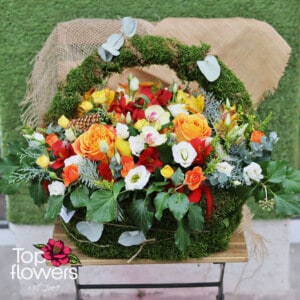 You are | Basket172.00 лв.
You are | Basket172.00 лв.
